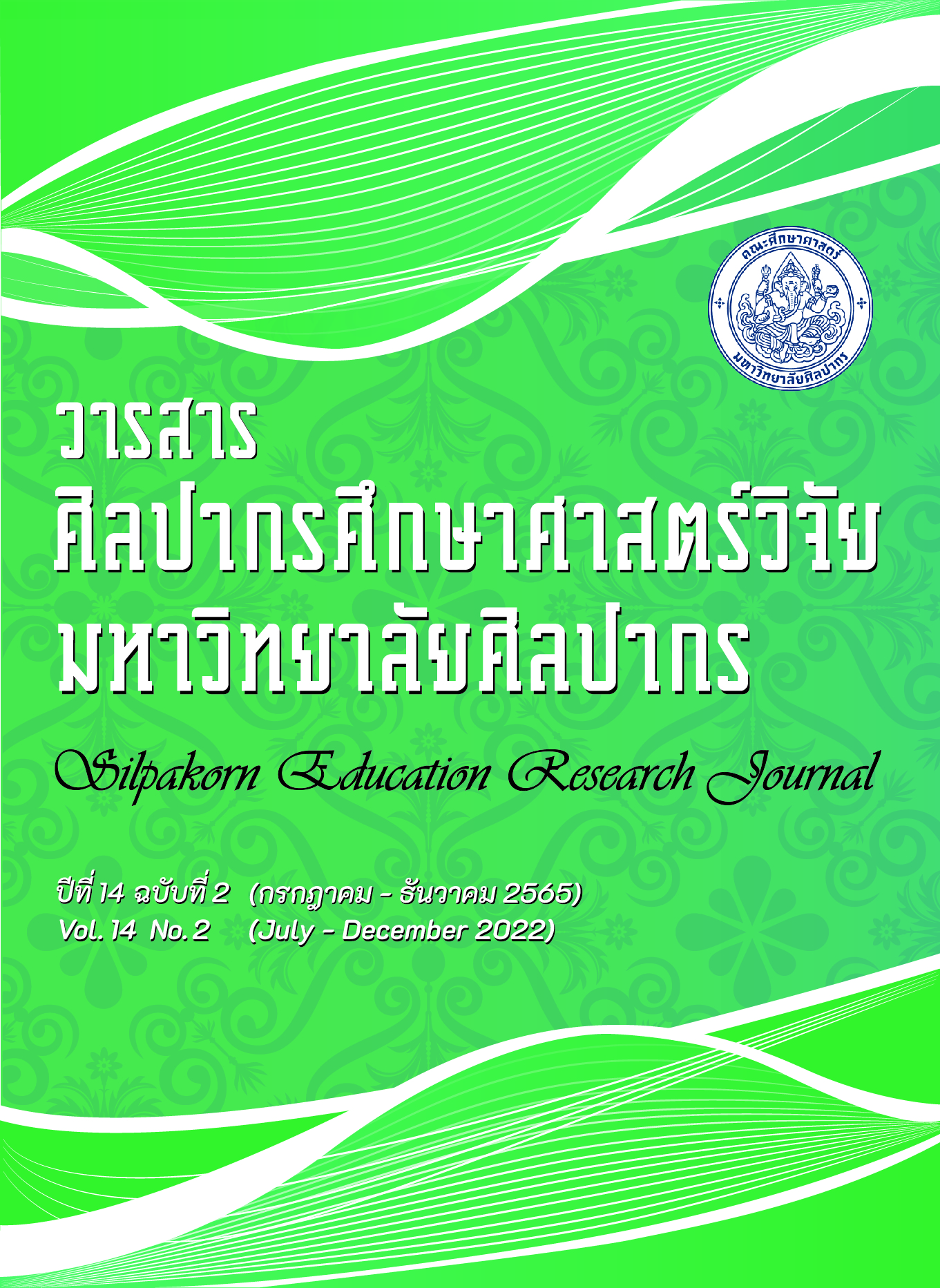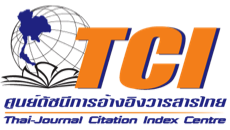การพัฒนาความคิดสร้างสรรค์ของเด็กปฐมวัย โดยการจัดประสบการณ์การเรียนรู้ตามแนวคิดสตีมศึกษา
คำสำคัญ:
การจัดประสบการณ์การเรียนรู้ตามแนวคิดสตีมศึกษา/ ความคิดสร้างสรรค์/ เด็กปฐมวัยบทคัดย่อ
การวิจัยครั้งนี้มีวัตถุประสงค์เพื่อ 1) พัฒนาแนวทางการจัดประสบการณ์การเรียนรู้ตามแนวคิดสตีมศึกษาสำหรับเด็กปฐมวัย 2) เปรียบเทียบความคิดสร้างสรรค์ของเด็กปฐมวัยก่อนและหลังการได้รับการจัดประสบการณ์การเรียนรู้ตามแนวคิดสตีมศึกษา กลุ่มเป้าหมายคือเด็กระดับชั้นอนุบาลปีที่ 2/3 โรงเรียนวัดสามง่าม (คงทองอนุสรณ์) จำนวน 10 คน ได้มาจากการเลือกแบบเจาะจง การดำเนินการวิจัยแบ่งเป็น 2 ระยะ คือ ระยะที่ 1 การพัฒนาแนวทางการจัดประสบการณ์การเรียนรู้ตามแนวคิดสตีมศึกษาสำหรับเด็กปฐมวัย และระยะที่ 2 การดำเนินการทดลอง มีรูปแบบการวิจัยแบบ Pre Experimental Design แบบ The One – Group Pretest – Posttest Design ผลการวิจัยพบว่า 1) การพัฒนาแนวทางการจัดประสบการณ์การเรียนรู้ตามแนวคิดสตีมศึกษาสำหรับเด็กปฐมวัยประกอบด้วย 5 ขั้นตอน ดังนี้ ขั้นตอนที่ 1 การระบุปัญหาหรือกำหนดปัญหา ขั้นตอนที่ 2 การรวบรวมข้อมูลเกี่ยวกับปัญหา ขั้นตอนที่ 3 การวางแผนการแก้ปัญหา ขั้นตอนที่ 4 การลงมือปฏิบัติ ขั้นตอนที่ 5 การนำเสนอ โดยผลการประเมินความเหมาะสม ของแนวทางการจัดประสบการณ์การเรียนรู้ตามแนวคิดสตีมศึกษาสำหรับเด็กปฐมวัยอยู่ในระดับมากที่สุด และ 2) หลังการจัดประสบการณ์การเรียนรู้ตามแนวคิดสตีมศึกษาเด็กปฐมวัยมีความคิดสร้างสรรค์สูงกว่าก่อนการจัดประสบการณ์การเรียนรู้ตามแนวคิดสตีมศึกษา โดยคะแนนในภาพรวมของความคิดสร้างสรรค์ก่อนการทดลองมีค่าเฉลี่ยเท่ากับ 9.5 ส่วนเบี่ยงเบนมาตรฐานเท่ากับ 2.99 อยู่ในระดับต่ำ หลังการทดลองมีค่าเฉลี่ยเท่ากับ 30.60 ส่วนเบี่ยงเบนมาตรฐานเท่ากับ 3.41 อยู่ในระดับปานกลาง มีร้อยละพัฒนาการ เท่ากับ 33.76
เอกสารอ้างอิง
Abhisit, T. (2016). Creativity for Children and Youth. Bangkok: Chulalongkorn University. (in Thai)
Jellen, H., and Urban, K. K. (1986). “The TCT-DP (Test for Creative Thinking-Drawing Production): An Instrument That can be Applied to Most Age and Ability Groups”. The Creative Child and Adult Quarterly (11): 138-155.
Kanjanawasee, S. (2013). Classical Test Theory. Bangkok Chulalongkorn University Press. (in Thai)
Khowtakool, S. (2010). Educational Psychology. Bangkok: Chulalongkorn University Press. (in Thai)
Kraiwan, H., and Lehmongkol, P. (2017). “Learning Experience Provision of the STEAM Education on Preschool Children’s Creative Problem Solving Ability”. Journal of Kasetsart E ducational Review 31(1): 123-133. (in Thai)
Laddaklom Booncherdchoo, S. (2015). “Stem to Steam Plus Stream and Stemm in the Learning Provision for Early Childhood Development”. Journal of Education Silpakorn University 13(1): 6-16. (in Thai)
Meechan, S. (2004). “Rater Agreement Index (RAI)”. Songklanakarin J. of Social Sciences and Humanities 10(2): 120-121. (in Thai)
Nillapun, M. (2015). Education Research Methodology. Nakhonpathom: Silpakorn University Press. (in Thai)
Office of the Education Council. (2021). Early Childhood Development Plan 2021-2027. [Online]. Retrieved March 31, 2022, from http://www.netlibrary.com
Panmanee, A. (2014). Practice Thinking Think Creatively. Bangkok: Chulalongkorn University.
(in Thai)
Pongern, W. (2017). “STEAM, Arts for STEM Education: Improvement in Perception, Capacity and Inspiration for Children”. Journal of Education Studies 45(1): 320-334. (in Thai)
Prajonghat, W. (2014). “The Effect of Picture Completion Art Activities on the Creativity of the Second Year Preschoolers”. Veridian E-Journal 7(2): 937-946. (in Thai)
Puachindanet, J. (2018). Invention Integration Activities to Creative. Bangkok: Chulalongkorn University. (in Thai)
Puttikul, P., Lertprasert, C., and Chancharoen, R., et al. (2020). “Development of Instructional Model Based on STEAM Education to Enhance Problem Solving Thinking of Young Children”. Phranakhon Rajabhat Research Journal (Humanities and Social Sciences) 15(1): 407-421. (in Thai)
Samahito, C. (2014). Workshop Document in STEM Integration Activities for Early Childhood. Preschool Education Association of Thailand. 18 January, 2014 and 8 February 2014. (in Thai)
Sariwat, L. (2015). Cognition. Bangkok: Odeonstore. (in Thai)
Wongpralab, C. (2010). “Creativity that Can be Created”. Journal of Education Khon Kaen University 33(4): 10-21. (in Thai)





